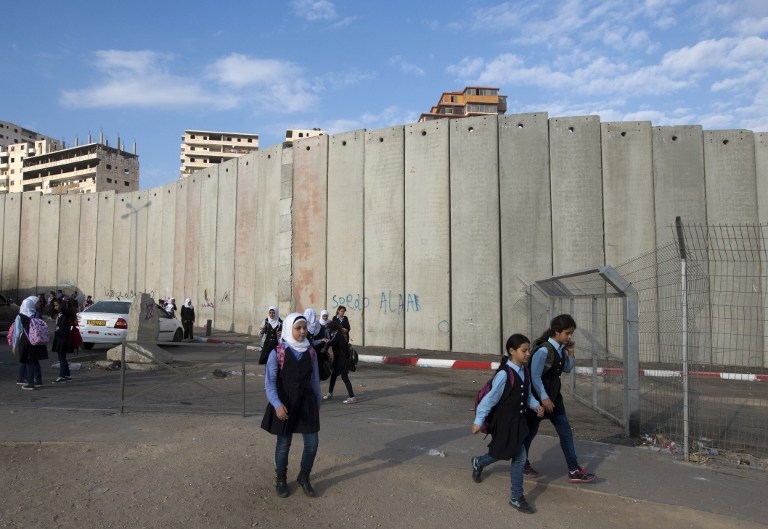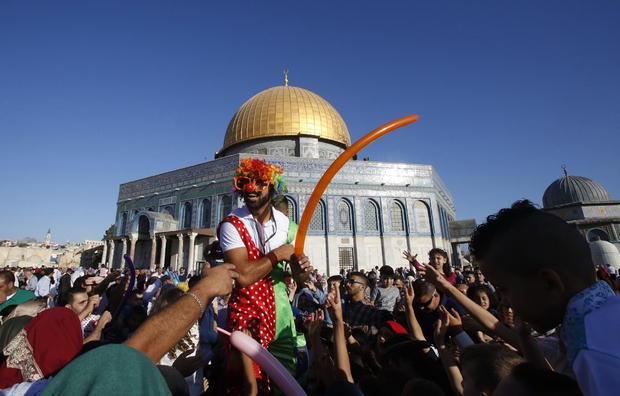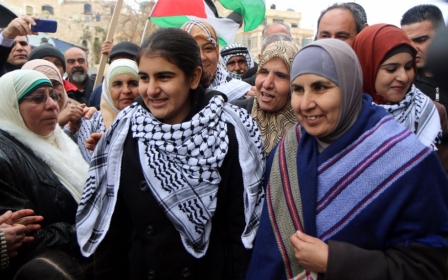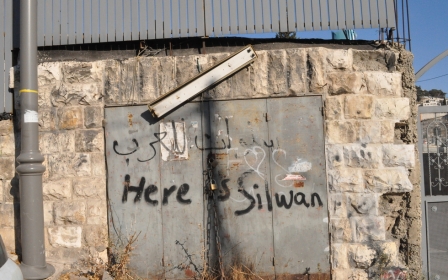East Jerusalem is occupied but the hearts and minds of the children are not

Jerusalem has a special place in the hearts of people all over the world. I was fortunate to visit it again recently, or rather “return”, as my parents were both born in this great city.
My first sighting of the Dome of the Rock never fails to send a shiver down my spine. There is no other place like it. It is home to holy sites revered by followers of the world’s three great religions Islam, Christianity and Judaism. They are literally within shouting distance of each other.
Politically, Jerusalem is claimed by Israel as its “eternal united capital”, but the Palestinians too claim East Jerusalem as the capital of their future state. No state, apart from Israel, considers it to be Israel’s capital and, in the absence of a Palestinian state, Palestinians can only dream of it becoming their capital.
The additional reality is that far from it being united, the city is divided into West Jerusalem, which is predominantly, if not exclusively, inhabited by Jews today after the expulsion of its Palestinian residents by Jewish gangs in 1948, and East Jerusalem with an overwhelmingly Palestinian population but an increasing number of Jewish settlers in illegal settlements which Israel has been building since the capture of East Jerusalem in 1967.
One city, two worlds
The contrast between the two Jerusalems could not be starker. As a friend who recently visited for the first time told me: “I could not believe the difference between west and east. The west in many places had a western, American feel with wide roads, pavements and grass verges, while the east seemed underdeveloped, crowded and chaotic."
You have to ask what the municipality presiding over both parts of the city is doing to deliver services to the Palestinian taxpayers
There are many aspects of the occupation of East Jerusalem that are troubling, including the settlements, the wall, house demolitions, house evictions, arbitrary closures, attacks on Al-Aqsa mosque and lack of permits for Palestinians to build and expand. However, the situation for children is particularly disturbing.
While Palestinian families occasionally make use of facilities in West Jerusalem, they do so reluctantly, fearing discrimination and harassment by their Jewish counterparts. Instead, some choose to make a journey to Ramallah or Jericho for their children’s and their leisure outings. This is sad because it reduces the opportunities for interaction between the two communities, especially the children, before their characterisation of the other is formed through parental or societal influence.
You have to ask what the municipality presiding over both parts of the city is doing to deliver services to the Palestinian taxpayers, who cannot turn to the Palestinian Authority for them because Israel does not allow it to operate in Jerusalem.
Never shall they meet
Opportunities for Jewish and Palestinian children to mix at school are almost non-existent. Jerusalem’s only Arab-Jewish school has faced attacks from Jewish extremists including an arson attack in November 2014, anti-Arab graffiti in June 2015, and even had its listing on Waze, a google-owned app changed to “a threat”.
While the two populations are largely segregated, the level of poverty in the city affects both communities with some 50 percent of Jerusalem’s 850,000 residents living below the poverty line including 82 percent of the population in East Jerusalem.
In the absence of reasonable provision of leisure facilities and under a brutal daily occupation you would think that children can find some comfort, enjoyment and security in their East Jerusalem schools.
Well, on the face of it, this should be possible. However, in reality there is no happy story to tell. Israel, through its occupation, is on a mission to attract the hearts and minds of Palestinian children, to love it, adore it and accept it as the ruling entity over them, without question.
During my visit, I witnessed the start of the new school year. Families were busy buying books, stationary and the status symbol school bag for their children. The bag tends to be in the style of the current craze. This year, it seemed anything depicting images from Disney’s Frozen was a must have.
One of my young relatives was upset not because she had not bought a Frozen bag and book covers, but because her cousin was also planning to buy the same. “Why can’t she buy Mini Mouse?” she asked. Children will be children. She, like most if not all Palestinian children, was oblivious to the battle for her identity and belonging that is being waged by Israel on Jerusalem’s youngest residents.
Chronic shortage of space
East Jerusalem’s schools suffer from a basic lack of infrastructure and resources.
A report published in August by the nonprofit organisation Ir Amim found that the number of East Jerusalem’s Palestinian children studying in the “informal education system” - schools which are publicly recognised, but only partially funded and operated by third parties - has surpassed those studying in both the formal education system, which are fully publicly funded and operated, and those who study in private schools.
Ir Amim reported that the shortage of classrooms in East Jerusalem had grown to 2,672 units, stating that “authorities have perpetuated the classroom shortage by not allocating sufficient land to build more classrooms in East Jerusalem”.
The report also worryingly noted that 36 percent of students drop out of school in East Jerusalem. Anecdotally, the number of boys that drop out is higher than girls. As men are often the main breadwinner in families here, this raises a serious question about what the boys go on to do with their time, considering their low skill levels and the lack of opportunities for employment, and its overall impact on the society.
As a result of parent perception of the inadequacy of public schools, many are forced to turn to private education. This is extremely costly, particularly when one considers the economic situation in East Jerusalem characterised by low wages and high taxes.
Hearts and minds
The other worrying feature of the current situation is Israel’s attempt to influence children’s understanding of their identity and how they should view it. It has been trying to do this through the imposition of the Israeli curriculum as opposed to the PA curriculum in East Jerusalem schools. Israel has been trying to do this for years but, having faced severe resistance from parents and the schools themselves, it is now linking the release of investment in schools to the adoption of the curriculum.
My recent experience though tells me that Israel cannot win the battle for the hearts of the children who are Palestinian, feel Palestinian and will grow up as Palestinian
People I talked to during my recent visit referred to this as “educational blackmail”. Several told me they felt that Israel “was brainwashing our children to forget their Palestinian identity while at the same time becoming admirers of their occupier,” as one put it.
The Israeli curriculum refers to Jerusalem as Israel's capital and encourages children to celebrate what Israel has done since capturing it or, as they refer to it, as its “unification”. This is only one example of how Israel attempts to impose its own narrative on impressionable young children in early school years.
My recent experience though tells me that Israel cannot win the battle for the hearts of the children who are Palestinian, feel Palestinian and will grow up as Palestinian. Israel may feel that imposing its own narrative through blackmail may change minds, but it will fail. Palestinian schools may adopt the Israeli curriculum in order to secure funds, but Israel should realise that the industrious and proud Palestinians will ensure their children think Palestinian too.
East Jerusalem may be under occupation, but the hearts and minds of the children are not.
- Kamel Hawwash is a British-Palestinian engineering professor based at the University of Birmingham and a longstanding campaigner for justice, especially for the Palestinian people. He is vice chair of the Palestine Solidarity Campaign (PSC) and appears regularly in the media as commentator on Middle East issues. He runs a blog at www.kamelhawwash.com. He writes here in a personal capacity.
The views expressed in this article belong to the author and do not necessarily reflect the editorial policy of Middle East Eye.
Photo: Palestinian school children walk past a section of Israel's controversial separation barrier in the Ras Khamis neighbourhood of East Jerusalem on 12 November 2013 (AFP)
This article is available in French on Middle East Eye French edition.
New MEE newsletter: Jerusalem Dispatch
Sign up to get the latest insights and analysis on Israel-Palestine, alongside Turkey Unpacked and other MEE newsletters
Middle East Eye delivers independent and unrivalled coverage and analysis of the Middle East, North Africa and beyond. To learn more about republishing this content and the associated fees, please fill out this form. More about MEE can be found here.







